Transform invasive plants into flavorful soups, compotes, and crumbles
July 24th, 2023
July 24th, 2023
BY JULIA WALKER THOMAS
Japanese knotweed is an extremely tenacious invasive plant. It grows at a break-neck pace and quickly crowds out its native counterparts by blocking sunlight and consuming large amounts of nutrients and minerals from the soil. Suffice it to say, it’s an unwelcome presence in Acadia National Park and the entire region.
But when the plant’s shoots are cooked up with sugar, lemon zest, and water into a tangy jam, Japanese knotweed is splendid on toast.
While the park’s approach to invasive plant suppression doesn’t include eating them – and foraging in the park isn’t allowed – some invasives you might find in your own backyard can be transformed into flavorful soups, compotes, and crumbles. It’s a tasty way to “take a bite out of invasives” and help prevent their spread.
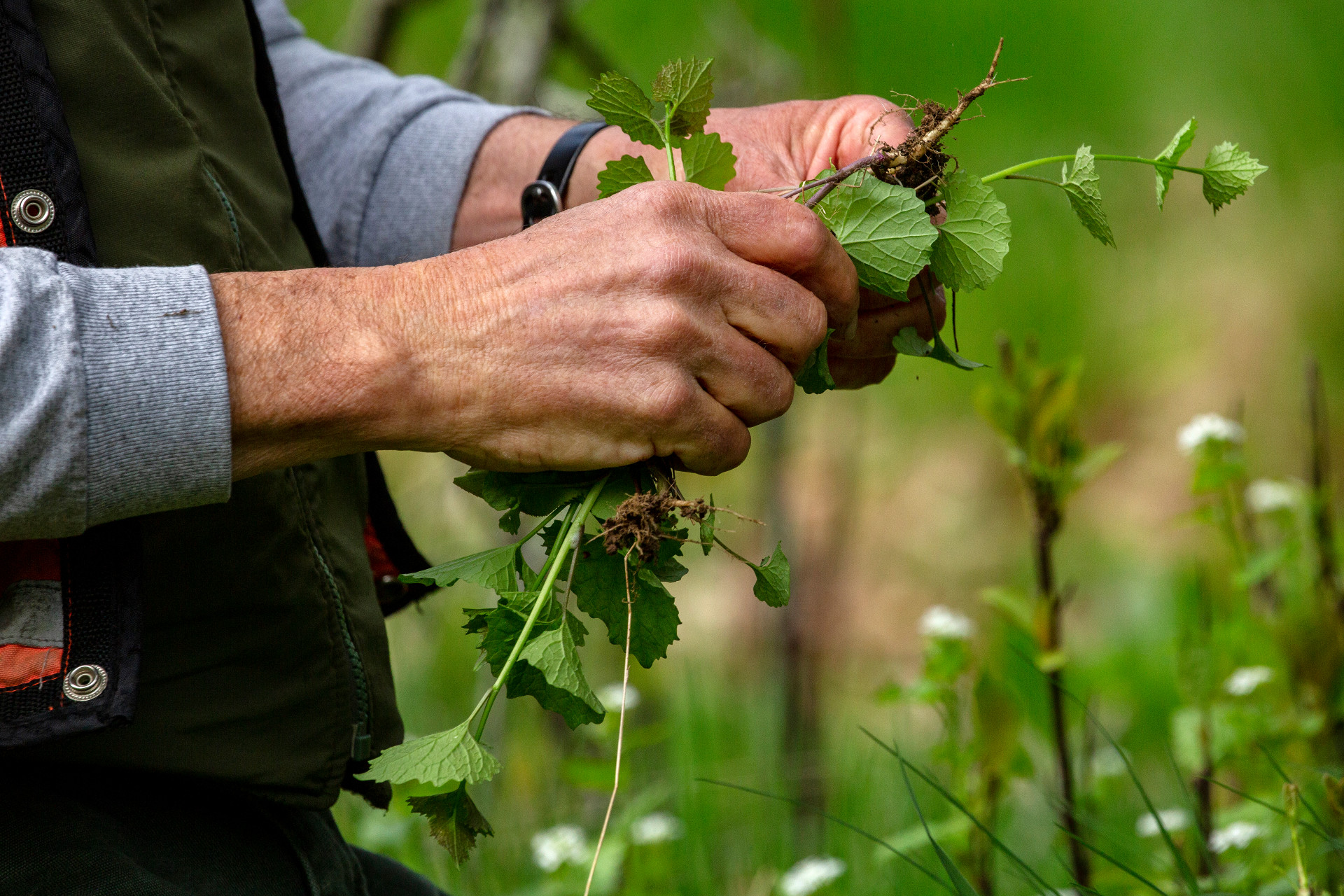
Garlic mustard is removed from the Great Meadow loop by Jim Burka, Acadia National Park biological science technician. (Photo by Ashley L. Conti/Friends of Acadia)
In Acadia, more than a quarter of the plants growing in the park are not native. Some are considered invasive, meaning that, if time and conditions allow, they would take over the landscape and wipe out native plants and shrubs, as well as the complex ecosystems dependent on them.
Invasives distract pollinators from native plants, provide wildlife with less nutritious fruit and foliage than native plants, and even create physical barriers for wildlife, making it harder for them to move freely through an area, find shelter, or detect and evade predators.
If you’re new to foraging, be sure to do your research first (see recommendations below).
To help inspire your invasive-eating, Chef Bobby Will from Salt and Steel in Bar Harbor shares some delicious ideas for two of the Acadia region’s most prolific and edible invasive plants.
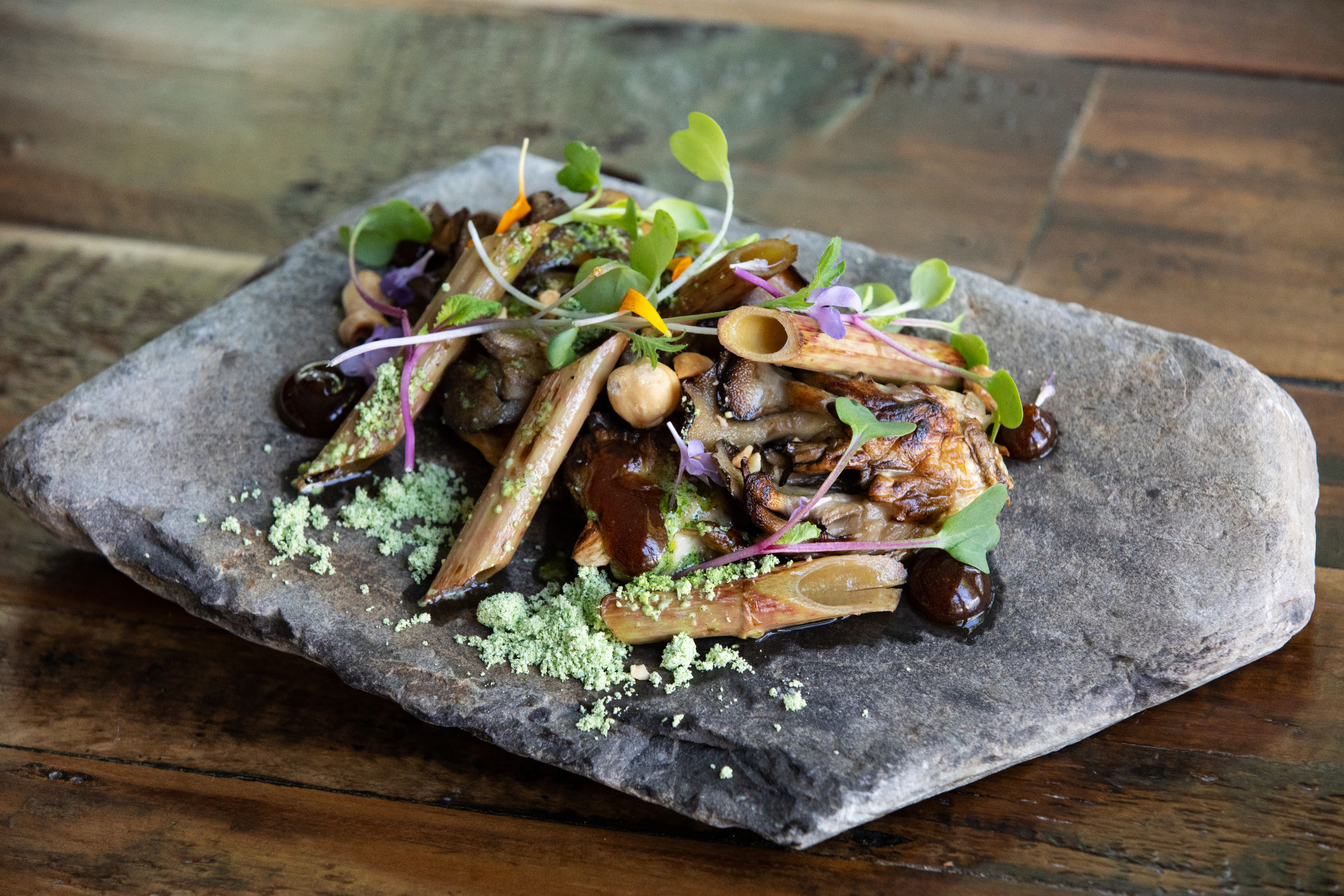
“Walking through Acadia,” a dish created by Chef Bobby Will features Japanese knotweed purchased from foragers in Hancock County. (Photo by Julia Walker Thomas/Friends of Acadia)
Once established, this perennial herbaceous plant can grow up to 10 feet in one growing season. Its young shoots are the most consumed part, as they are tender and have a tart flavor reminiscent of rhubarb.
Japanese Knotweed Compote
Similar to rhubarb, Japanese knotweed shoots can be used to make a tangy compote. Chop the young shoots into small pieces and cook them down with sugar, a bit of water, and optional spices like cinnamon or ginger. Simmer until the shoots are tender and the mixture thickens. The compote can be used as a topping for pancakes, yogurt, ice cream, or incorporated into pies and tarts.
Japanese Knotweed Crumble
Create a delicious crumble by combining chopped shoots with sweetened berries or apples. Toss the fruit and Japanese knotweed together with a bit of sugar, lemon juice, and spices. Top it with a crumbly mixture of flour, oats, butter, and sugar. Bake until the topping is golden and the filling is bubbling. Serve it warm with a scoop of vanilla ice cream.
Japanese Knotweed Jam
Turn Japanese knotweed into a tangy jam that can be enjoyed on toast, pastries, or used as a filling in baked goods. Cook the chopped shoots with sugar, lemon zest, and a small amount of water until the mixture thickens and reaches a jam-like consistency.
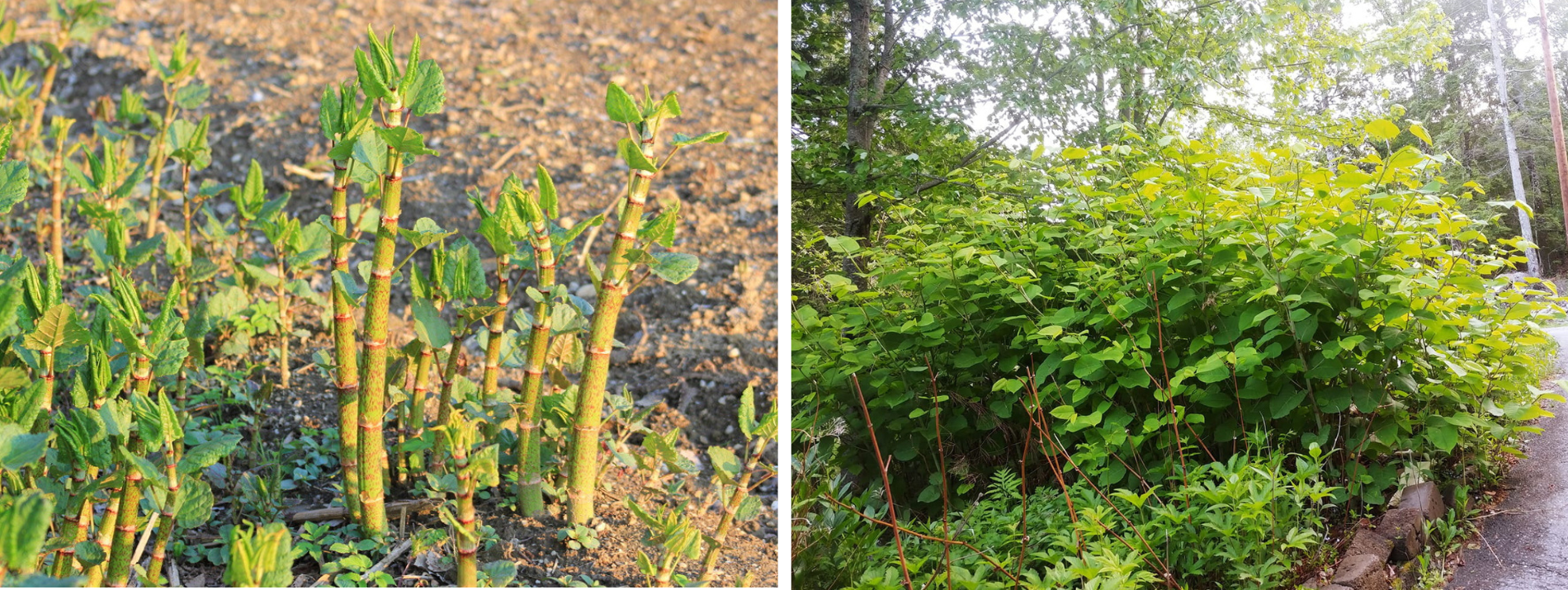
Garlic mustard is a biennial, which means it produces seed on its second year that spreads by seed dispersal and can grow up to six feet tall. It’s best to harvest when the plant is younger and the taste is less bitter-in addition to the unpleasant taste, the stems of older plants also contain cyanide. But be sure to harvest the whole plant to help prevent its spread! And note that the recipes call for the leaves, NOT the stems.
Garlic Mustard Pesto
Use garlic mustard leaves as a flavorful substitute for basil in a traditional pesto recipe. Blend the leaves with garlic, pine nuts or walnuts, Parmesan cheese, olive oil, salt, and pepper. This pesto can be used as a spread, tossed with pasta, or used as a sauce for grilled meats or vegetables.
Sauteed Garlic Mustard
Heat some olive oil or butter in a pan and saute garlic mustard leaves (NOT stems) with minced garlic until wilted. Season with salt, pepper, and any other desired herbs or spices. Sauteed garlic mustard can be served as a side dish or used as a topping for grilled meats, fish, or roasted vegetables.
Garlic Mustard Soup
Use garlic mustard leaves as an ingredient in a creamy soup. Saute the leaves with onions and garlic, then add vegetable or chicken broth and simmer until the leaves are tender. Puree the mixture, season with salt, pepper, and herbs of your choice, and stir in cream or coconut milk for added richness.
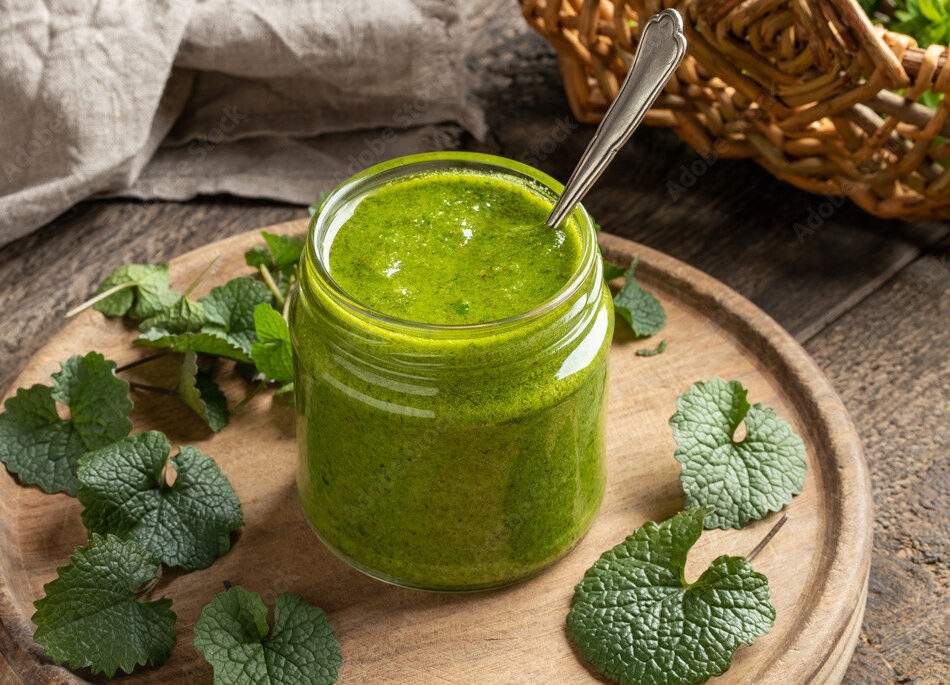
A jar of homemade Garlic Mustard Pesto. (Photo by Madeleine Steinbach)
Visit Salt and Steel in Bar Harbor and try "Walking Through Acadia," a dish featuring Japanese knotweed, roasted maitake mushrooms, sherry vinegar, hazelnuts, and tarragon "moss." (Pictured: Chef Bobby Will in the kitchen at Salt and Steel, his resta urant in Bar Harbor. Photo by Julia Walker Thomas/Friends of Acadia)
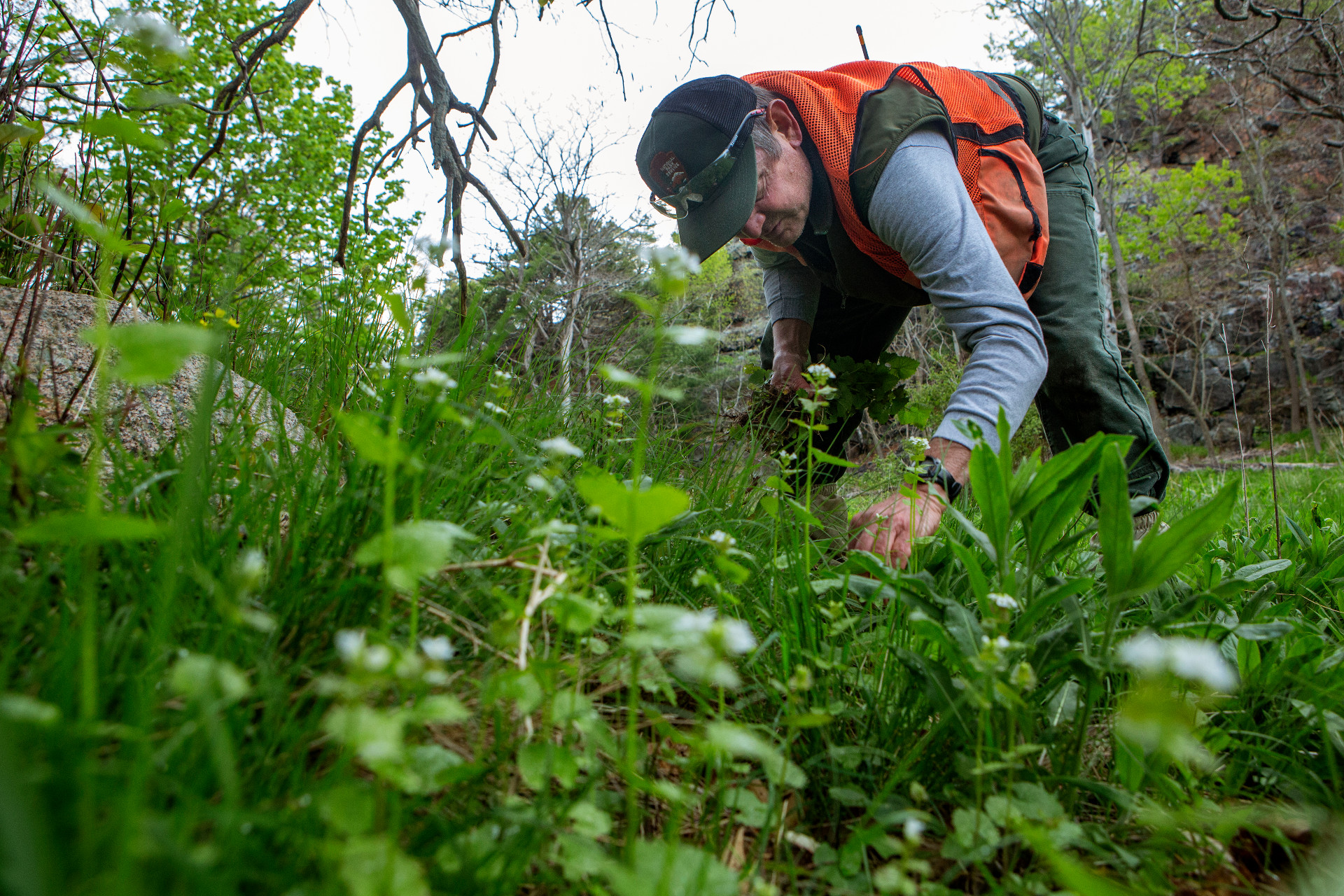
Jim Burka, Acadia National Park biological science technician, removes garlic mustard off the
Great Meadow Loop. Foraging isn’t allowed in Acadia. (Photo by Ashley L. Conti/Friends of Acadia)
Foraging on private property should be conducted responsibly. Be mindful of conservation guidelines, protected areas, and local regulations. Respect private property and obtain permission before foraging on someone else’s land.
Accurate plant identification is crucial when foraging wild plants-native or invasive. Mistakenly consuming toxic plants or misidentifying look-alike species con hove severe health consequences. Be certain of a plant’s identity before consuming it, and if you’re unsure, consult with a local expert, botanist
or foraging guide.
Wild plants con be exposed to environmental pollutants such as pesticides, heavy metals, or industrial waste. Avoid foraging in areas with a known history of contamination, such as near roadways, industrial sites, or agricultural fields.
When disposing of invasives, do not throw leftovers or discorded plant ports in your compost pile. It’s best to put them in a sealed trash bog which will prevent any occidental spreading. It’s important to not create new infestations by tending a garden of garlic mustard or knotweed. Garlic mustard was
established on Mount Desert Island after being planted as a culinary herb.
JULIA WALKER THOMAS is Friends of Acadia’s Visual Storytelling and Creative Projects Manager.